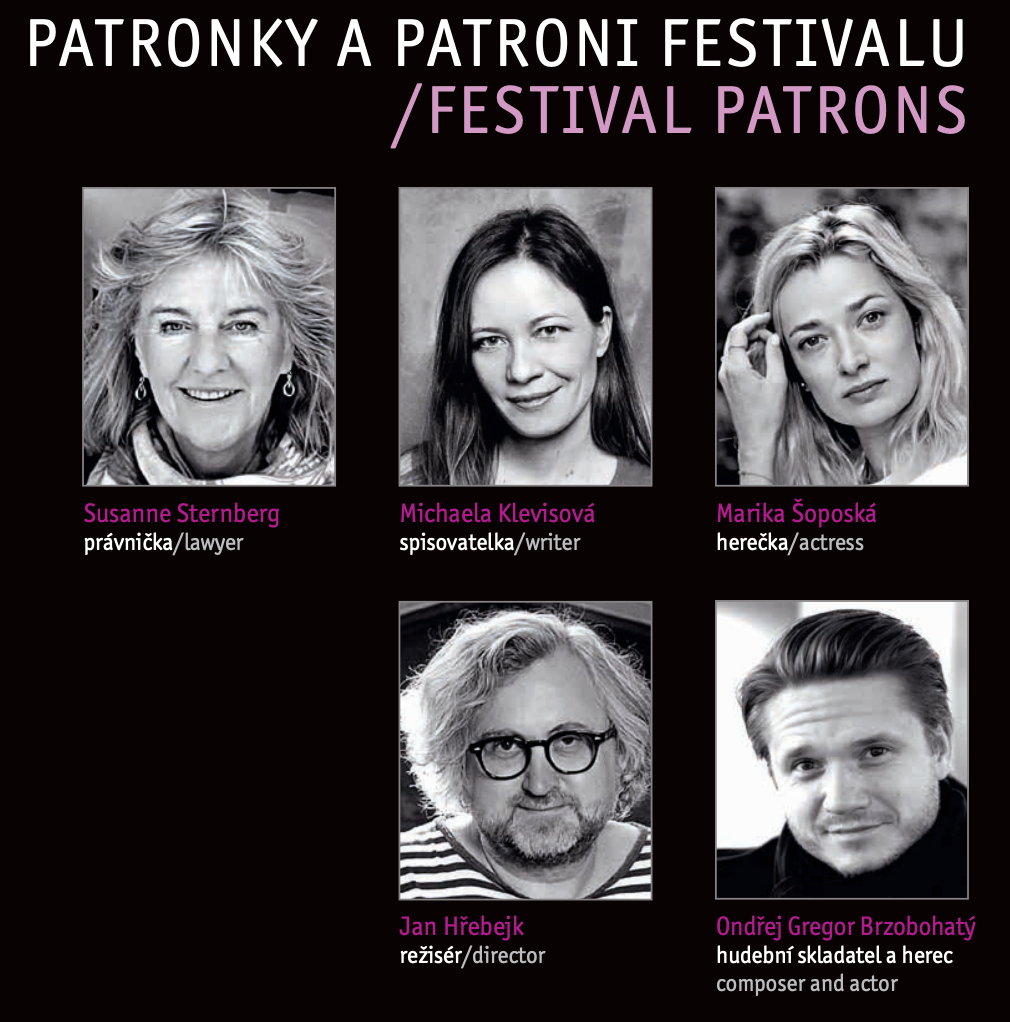12th edition main partners
Our sincere thanks to the main partners of the 12th Noir Film Festival, which are the Central Bohemian Region and innogy, as well as the main media partner, which is Voyo.

Our sincere thanks to the main partners of the 12th Noir Film Festival, which are the Central Bohemian Region and innogy, as well as the main media partner, which is Voyo.
Srdečně děkujeme hlavním partnerům 12. Noir Film Festivalu, kterými jsou Středočeský kraj a innogy, a stejně tak i hlavnímu mediálnímu partnerovi, kterým je Voyo.
Opět děkujeme autorské dvojici Marii Urbánkové a Matouši Vyhnánkovi za originální festivalovou znělku. 🙂
The American hard-boiled school of crime fiction, associated with names like Dashiell Hammett, Raymond Chandler, James M. Cain and Cornell Woolrich, is usually considered one of the major sources of inspiration for classic film noir. It would seem that this is a purely male affair, and that men are behind the vast majority of canonical dark tales. But this year’s section, aptly named after the iconic TV series Murder, She Wrote, aims to show that reality is not so black and white. Women acted as screenwriters in large numbers, and a significant percentage of films noir were directly adapted from novels by female authors. The Noir Film Festival already highlighted the important legacy of the American novelist Patricia Highsmith in the past and this year it will shine a light on other prominent figures: Vera Caspary (Laura, Bedelia), Dorothy B. Hughes (The Fallen Sparrow), Ethel Lina White (The Spiral Staircase) and Marie Belloc Lowndes (The Lodger).
Milan Hain
Za jeden ze zásadních inspiračních zdrojů klasického filmu noir je považována americká drsná škola kriminální fikce spojená se jmény jako Dashiell Hammett, Raymond Chandler, James M. Cain a Cornell Woolrich. Mohlo by se zdát, že jde o ryze chlapskou záležitost a že za naprostou většinou kanonických temných příběhů stojí muži. Letošní sekce, příznačně pojmenovaná podle ikonického televizního seriálu To je vražda, napsala, má ale za cíl ukázat, že skutečnost není zdaleka tak černobílá. Ženy ve velkém počtu působily v rolích scenáristek a nemalé procentu filmů noir vzniklo přímo jako adaptace románů ženských autorek. Noir Film Festival už v minulosti připomněl důležitý odkaz americké prozaičky Patricie Highsmith a letos si posvítí na další výrazné osobnosti: Veru Caspary (Laura, Bedelia), Dorothy B. Hughes (Padlý vrabčák), Ethel Linu White (Točité schodiště) a Marii Belloc Lowndes (Podnájemník).
Milan Hain
In recent years, Czechs have discovered Poland as a popular holiday destination and it was only a matter of time before we would visit the country of our northern neighbors in our festival program. The Polish film noir section includes four films from the 1950s and 1960s, when Polish cinema rose to great artistic success and received a positive response abroad (Knife in the Water). This collection is complemented by the extraordinary audience hit of the 1990s, Pigs, which was made in a turbulent time of political transformation. The section reflects the early work of esteemed auteurs (Roman Polanski, Wojciech Jerzy Has) as well as titles that have been rather neglected in the Czech Republic (The Criminal Who Stole a Crime). The films will be presented at the festival by Iwona Łyko-Plos, curator of the National Film Archive in Prague, who has long been interested in the history of Polish cinema.
Milan Hain
Češi v posledních letech objevili Polsko jako oblíbenou prázdninovou destinaci a byla jen otázka času, kdy se do země našich severních sousedů vydáme i v našem festivalovém programu. Sekce polského filmu noir obsahuje čtyři snímky z 50. a 60. let, kdy se polská kinematografie podobně jako u nás vzepjala k velkým uměleckým úspěchům a dočkala se i pozitivního ohlasu v zahraničí (Nůž ve vodě). Tuto kolekci doplňuje mimořádný divácký hit 90. let Fízlové, který vznikl v pohnuté době politické transformace. Sekce reflektuje ranou tvorbu ceněných auteurů (Roman Polanski, Wojciech Jerzy Has) i u nás dosud spíše opomíjené tituly (Zločinec, který ukradl zločin). Filmy na festivalu osobně uvede kurátorka Národního filmového archivu Iwona Łyko-Plos, která se dlouhodobě zabývá historií polské kinematografie.
Milan Hain
Seznamte se s patronkami a patrony letošního ročníku:

…jehož autorem je herec Tomáš Hanák. Namluvil herec Jan Šťastný. Těšíme se na vás už 22. srpna na hradě Český Šternberk!
Kdo navrhnul slavné šaty bez ramínek, které Rita Hayworth nosí v Gildě? Ve kterém filmu s Humphreym Bogartem a Lauren Bacall se v obsazení objevili také Edward G. Robinson a Claire Trevor? V jaké metropoli se odehrává Noc a město Julese Dassina? A ve které kategorii uspěl v oscarovém klání snímek Třetí muž? Nemusíte znát odpovědi na výše uvedené otázky, abyste se zúčastnili našeho historicky prvního soutěžního kvízu! Řídíme se totiž heslem: když nevím, tak tipuju. Vedle rozšíření vašich znalostí slibujeme hlavně dobrou zábavu. Soutěžit mohou jednotlivci nebo dvojice na základě uhrazení vstupenky/zápisného. Ti nejlepší se mohou těšit na stylové ceny. K účasti se vám bude hodit telefon s přístupem na internet a aplikací Kahoot!, ale webový prohlížeč bude případně taky stačit. Přejeme hodně zdaru!
KDY: sobota 24. 8., 13.30, sál Velvyslanectví USA, zápisné 100 Kč